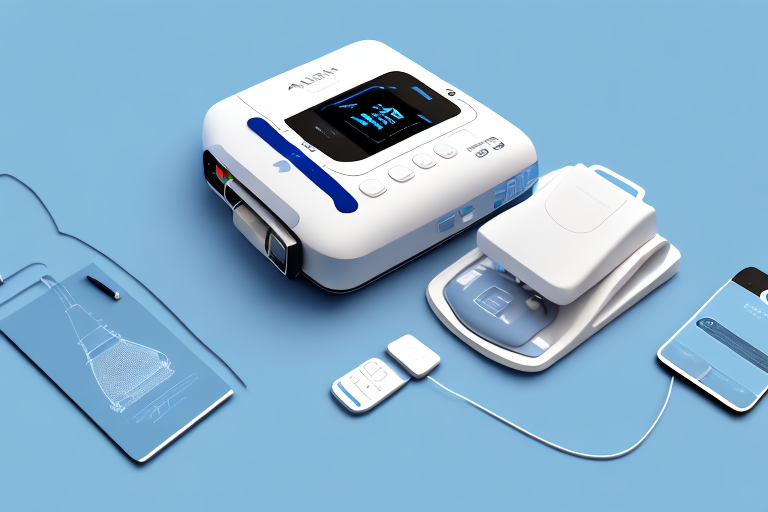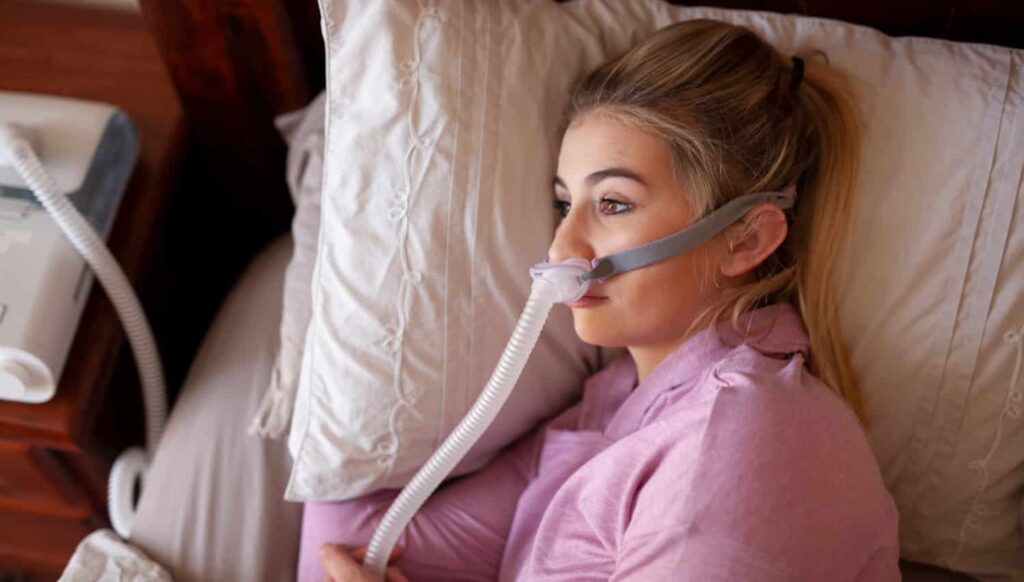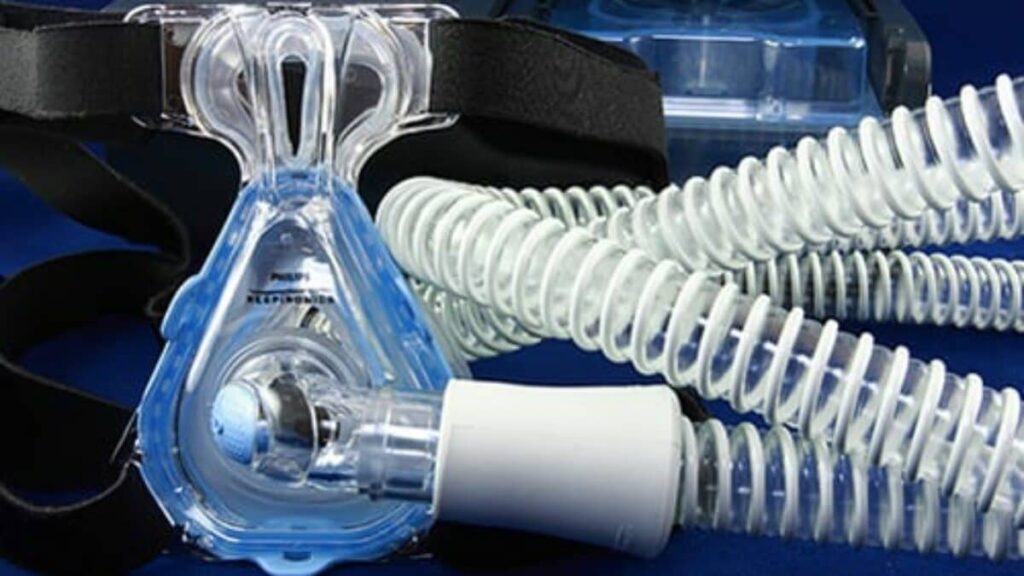CPAP (Continuous Positive Airway Pressure) technology has revolutionized the treatment of sleep apnea, a common sleep disorder characterized by pauses in breathing during sleep. Over the years, CPAP technology has seen remarkable advancements, improving patient comfort, compliance, and treatment outcomes. In this article, we will explore the latest innovations in CPAP technology and their impact on sleep apnea treatment.
Understanding CPAP Technology
Sleep apnea is a common sleep disorder that affects millions of people worldwide. It occurs when the upper airway collapses during sleep, leading to pauses in breathing and fragmented sleep patterns. Fortunately, there is a solution to this problem – CPAP machines.
CPAP stands for Continuous Positive Airway Pressure. Visit https://store.airliquidehealthcare.com.au/en/cpap-machines to get how these machines work by delivering a continuous stream of pressurized air through a mask that covers the nose or mouth, or both. The air pressure acts as a splint, keeping the airway open and allowing uninterrupted breathing throughout the night.
CPAP machines have revolutionized the treatment of sleep apnea and have become the gold standard in managing this condition. They provide significant relief to individuals by effectively addressing the underlying cause of sleep apnea – the collapse of the upper airway.
The Basics of CPAP Machines
CPAP machines consist of three main components: the motor, the humidifier, and the mask. The motor is the heart of the machine, generating the required air pressure to keep the airway open. It is designed to be quiet and efficient, ensuring a peaceful sleep environment.

The humidifier is an essential part of the CPAP system. It adds moisture to the airflow, preventing dryness and irritation in the airway and nose. This helps to alleviate discomfort and ensures a more comfortable therapy experience. Learn more the role of CPAP machines in reducing cardiovascular risks.
The mask is the interface between the machine and the user. It comes in various styles and sizes to accommodate different preferences and facial structures. The mask should fit snugly but comfortably, forming a seal to prevent air leaks and maximize the effectiveness of the therapy.
The Role of CPAP in Sleep Apnea Treatment
CPAP therapy is highly effective in alleviating the symptoms of sleep apnea. By maintaining consistent air pressure, CPAP machines prevent the collapse of the upper airway, promoting uninterrupted breathing and reducing the frequency of apnea events.
Improved sleep quality is one of the key benefits of CPAP therapy. With the airway kept open, individuals experience fewer disruptions during sleep, leading to a more restful and rejuvenating rest. This, in turn, contributes to increased daytime alertness and reduced fatigue.
Furthermore, CPAP therapy has been shown to have a positive impact on overall health. By effectively treating sleep apnea, CPAP machines help to reduce the risk of associated health conditions such as high blood pressure, heart disease, and stroke. They also improve cognitive function and mood, enhancing the overall quality of life for individuals with sleep apnea.
It is important to note that CPAP therapy is a long-term commitment. Consistent and regular use of the machine is crucial for optimal results. With proper adherence, individuals can experience significant improvements in their sleep and overall well-being.
In conclusion, CPAP machines are a remarkable technological advancement in the field of sleep medicine. They provide a non-invasive and highly effective solution for managing sleep apnea, improving sleep quality, and enhancing overall health. With their ability to keep the airway open and ensure uninterrupted breathing, CPAP machines have become a game-changer for millions of individuals worldwide.
The Evolution of CPAP Technology
Since the introduction of CPAP machines in the 1980s, there have been significant advancements in their design and functionality. Let’s take a closer look at the evolution of CPAP technology over the years.
Early CPAP Devices: A Look Back
The earliest CPAP devices were bulky and had limited adjustability. They were primarily designed for use in hospitals and sleep clinics. Patients often found them uncomfortable and cumbersome, leading to low compliance rates.
Despite their shortcomings, these early CPAP devices revolutionized the treatment of sleep apnea. For the first time, patients could receive continuous positive airway pressure to keep their airways open during sleep, improving their quality of life and reducing the risk of complications.
As researchers and engineers recognized the potential of CPAP therapy, they began to refine and enhance the technology.
One of the key challenges was to make the devices more comfortable and user-friendly. Manufacturers experimented with different materials and designs to create masks that fit better and caused less irritation. They also introduced features like adjustable straps and cushioning to improve the overall experience for patients.

Modern Advances in CPAP Design
With technological advancements and user feedback, CPAP devices have undergone significant improvements in recent years. Manufacturers have focused on making the machines smaller, quieter, and more user-friendly.
Today’s CPAP machines are compact and portable, allowing for easy transportation during travel. They also feature advanced algorithms that adjust the pressure based on the individual’s breathing patterns, ensuring optimal therapy even during different sleep stages.
Another notable advancement is the integration of wireless connectivity. Many modern CPAP devices can connect to smartphones or tablets, allowing users to track their therapy progress and adjust settings remotely. This connectivity also enables healthcare professionals to monitor patients’ adherence and make necessary adjustments to their treatment plans.
In addition to the machines themselves, there have been advancements in CPAP accessories. For example, there are now a variety of mask options available, including nasal masks, full-face masks, and nasal pillows, catering to different preferences and needs. These masks are designed to provide a secure and comfortable fit, minimizing air leaks and maximizing therapy effectiveness.
Furthermore, the development of CPAP humidifiers has addressed the issue of dryness and discomfort often associated with therapy. These humidifiers add moisture to the air delivered by the CPAP machine, reducing nasal congestion and irritation.
Looking ahead, researchers and engineers continue to explore new technologies and innovations to further enhance CPAP therapy. From advanced sensors that can detect and respond to changes in breathing patterns to smart algorithms that can optimize therapy settings in real-time, the future of CPAP technology holds great promise for improving sleep apnea treatment.
Latest Innovations in CPAP Technology
Driven by technological advancements and a better understanding of sleep apnea, the latest CPAP machines have introduced revolutionary features to enhance patient experience and treatment outcomes.
With the increasing prevalence of sleep apnea and its potential health risks, it is crucial to have effective and efficient treatment options. The latest innovations in CPAP technology have addressed these needs by incorporating cutting-edge features that improve therapy delivery and patient comfort.
Smart CPAP Machines
Smart CPAP machines utilize advanced sensors and algorithms to analyze sleep data and provide personalized therapy. These machines can detect changes in breathing patterns and adjust the pressure accordingly, ensuring optimal treatment throughout the night.
Imagine a CPAP machine that not only delivers continuous positive airway pressure but also adapts to your individual needs in real-time. Smart CPAP machines make this a reality by monitoring your breathing patterns and making automatic adjustments to the pressure levels. This intelligent technology ensures that you receive the precise amount of pressure required to keep your airways open, promoting uninterrupted sleep and effective treatment.
Furthermore, some smart CPAP machines also incorporate Bluetooth connectivity, allowing patients and healthcare providers to monitor treatment progress remotely. This feature enables healthcare professionals to track therapy adherence, identify potential issues, and make necessary adjustments without the need for in-person visits. Patients can also access their sleep data through smartphone apps, empowering them to take an active role in their treatment journey.
Miniaturization in CPAP Devices
Miniaturization has been a significant trend in CPAP technology. Manufacturers have made significant strides in reducing the size and weight of CPAP machines, making them more portable and convenient for users.
Gone are the days of bulky and cumbersome CPAP machines that restrict movement and hinder travel. The latest miniaturized CPAP devices are compact, lightweight, and designed with user-friendliness in mind. These smaller machines not only improve patient mobility but also increase comfort, enabling a more natural sleeping experience.
Imagine being able to carry your CPAP machine effortlessly in your backpack or suitcase, without compromising on performance. Miniaturization has made this possible, allowing individuals with sleep apnea to maintain their therapy regimen while on the go. Whether it’s a business trip or a vacation, the portability of these devices ensures that you can enjoy restful sleep wherever you are.
In addition to their compact size, miniaturized CPAP machines also incorporate advanced noise reduction technologies. These innovations minimize the noise generated by the device, creating a quieter sleep environment for both the user and their bed partner.
With the latest advancements in CPAP technology, individuals with sleep apnea can now experience enhanced therapy outcomes, improved convenience, and greater comfort. As research and innovation continue to push the boundaries, the future holds even more exciting possibilities for the field of CPAP technology.

The Impact of New CPAP Innovations
The latest innovations in CPAP technology have had a profound impact on sleep apnea treatment. Let’s explore some of the key benefits that patients and healthcare providers now enjoy.
Improvements in Patient Comfort and Compliance
Patient comfort and compliance are crucial for successful CPAP treatment. The introduction of smaller and quieter CPAP machines has significantly improved patient comfort, allowing for more restful sleep. Reduced noise levels and enhanced user-friendly interfaces have encouraged better compliance rates, leading to improved treatment outcomes.
Enhanced Data Tracking and Reporting
Modern CPAP machines are equipped with sophisticated data tracking capabilities. They record detailed information about the patient’s sleep patterns, usage, and treatment effectiveness. This data can be accessed by healthcare providers, enabling them to monitor patients remotely and make informed adjustments to therapy settings as needed.
Future Trends in CPAP Technology
As technology continues to advance, the future of CPAP technology looks promising. Here are a few trends to watch out for:
Predictions for Next-Generation CPAP Devices
Next-generation CPAP devices are expected to integrate more advanced sensor technology and artificial intelligence. These devices will be capable of analyzing real-time data, detecting subtle changes in breathing patterns, and automatically adjusting therapy settings accordingly.
There is also a growing focus on developing CPAP machines that are easier to navigate and operate, ensuring a seamless user experience for all individuals.
The Role of AI and Machine Learning in CPAP Innovation
Artificial Intelligence (AI) and Machine Learning (ML) are poised to play a significant role in CPAP innovation. These technologies hold the potential to further personalize therapy settings, identify trends and patterns in sleep data, and predict potential treatment challenges.
By harnessing the power of AI and ML, CPAP devices of the future will be able to adapt to individual needs and provide even more precise and effective sleep apnea treatment.
In conclusion, innovations in CPAP technology have ushered in a new era of sleep apnea treatment. From the early bulky devices to the sleek and smart machines of today, CPAP technology continues to evolve, improving patient comfort, compliance, and treatment outcomes. With exciting advancements on the horizon, the future of CPAP technology holds great promise in enhancing the lives of sleep apnea patients around the world.

